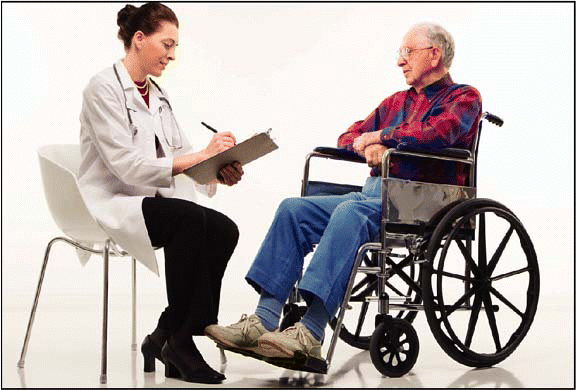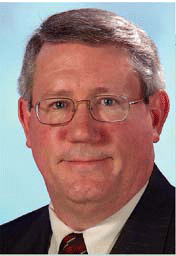America’s health care safety net may be full of holes, but its doctors and hospitals are generously pitching in with charity care to fill some tears in that net. As debate rages over competing state and federal proposals to cover 45 million Americans who lack health insurance, the private sector quietly continues to contribute billions of dollars toward medical care. According to Health Affairs magazine and adjusted for inflation, hospitals, clinics, and physicians contributed $27.6 billion, $8.3 billion, and $7.1 billion, respectively, in uncompensated care in 2006. Add to that the funds and expertise contributed by private foundations and you have a major weapon in the battle to provide medical care to the needy.
Explore This Issue
July 2007Physicians Care
A 2006 analysis of how private health care providers care for the uninsured, funded by the W.K. Kellogg Foundation, called private physicians the invisible giant of the nation’s safety net. The report detailed that whereas 10.6% of charity care is delivered at community health centers and 11.5% in hospitals, physicians give 77.9% of all charity care in their offices. It also noted that physicians tend to keep a low profile about this work, fearing being overwhelmed by needy patients and the health care activists, who favor public sector solutions, and worry that greater visibility and support for volunteer care by private physicians may undercut support for expanded insurance coverage. (Volunteer Health Care Programs: A Report to the W.K. Kellogg Foundation by Isaacs-Jellinek, March 2006, p. 4.)
Physicians have long provided charity care to patients at offices; however, from 1997 to today, the percentage of physicians who do so has dropped from 75% to 66%, according to the Center for Studying Health Systems Change. As public and private payers have tightly controlled reimbursements, financial pressures on physicians may be limiting their ability to provide charity care. Although AMA President J. Edward Hill, MD, says that charity care isn’t the solution to the problem of the uninsured, he sees physicians finding creative and efficient ways to provide such care.
Physicians and the communities they serve have gotten more sophisticated about providing charity care. Information technology connecting patients to doctors, particularly specialists, willing to provide charity care is helping nationally. Groups such as the Asheville, NC-based American Project Access Network (APAN) have replicated models developed locally to link patients and physicians in 20 communities nationally. The model involves finding community physician champions and getting them to network with other primary care physicians and specialists willing to care for indigent patients, Using APAN’s blueprint, they document the amount of care given and build an infrastructure for ongoing care. Another organization, the National Association of Free Clinics, networks clinicians nationally to raise more than $300 million annually from private sources to provide $3 billion in health care services to 4.5 million uninsured people.
While hospitals get most of their uncompensated care reimbursed by public sources, private philanthropy covers between 1% and 3% of direct patient care.
Private Foundations
Private foundations leave the nuts and bolts of delivering charity care mostly to physicians and hospitals. Large permanently endowed foundations tend instead to underwrite policy research and provide seed money and larger grants for service delivery experiments and infrastructure development. Some of the largest foundations devoted to health care and their top funding priorities are:
- Henry Kaiser Family Foundation, Menlo Park, CA: $550 million in assets; $899,300 total giving (2005). Funding supports: Medicaid/SCHIP, Medicare, costs/insurance, the uninsured.
- Robert Wood Johnson Foundation, Princeton, NJ: $9.367 billion in assets; $346 million total giving (2005). Funding supports: Addiction prevention and treatment, building human capital, childhood obesity, disparities.
- The Commonwealth Fund, New York, NY: $701 million total assets; $17 million total giving (2005). Funding supports: High-performance health system, special populations, international health policy and practice, communications.
- MetLife Foundation, Long Island City, NY: $149 million total assets; $30 million total giving (2005). Funding supports: Alzheimer’s and aging, parenting skills, healthy habits, HIV/AIDS awareness.
- W.K. Kellogg Foundation, Battle Creek, MI: $7.8 billion total assets, $253 million total giving (2005). Funding supports: Improving individual and community health, improving access and quality, vulnerable populations, resource mobilization.
These giants are considered value-added foundations, as opposed to hands-off smaller charities that, in essence, make grants directly to recipients. The value-added foundations have professional staffs and leaders who communicate publicly, manage grant programs, provide consultants, and promote their own initiatives.
For example, the Robert Wood Johnson Foundation recently made $3 million available to health care organizations and community organizers to promote events for Cover the Uninsured Week (CTUW), which began on April 23. CTUW had a Web site, e-mail newsletter, and materials on sponsoring a media event. The campaign focused attention on uninsured children and Congress’ deliberations over renewing funding for the State Children’s Health Insurance Program. CTUW enlisted physician groups such as the American College of Emergency Physicians, whose president, Brian Keaton, MD, said: One of the most heartbreaking sights in an emergency department is a very sick child whose illness could have been prevented or treated before it became an emergency.

The Uninsured Contribute
Not all uninsured people are indigent; many willingly pay out-of-pocket for needed services rather than paying for high-deductible insurance policies. Health Affairs estimated that out-of-pocket payments by the uninsured were $14.1 billion in 2000 ($16.5 billion in 2007 dollars). John Graham, director of health care studies at the Pacific Research Institute, says that bullying the uninsured to make them buy insurance will not solve the problem. The Tucson-based American Association of Physicians and Surgeons estimates that the uninsured pay about $60 billion in additional income taxes by forgoing the tax breaks for health insurance, more than the $43 billion in uncompensated care delivered annually.
Physicians are sensitive to their patients’ out-of-pocket costs. A recent study by H.H. Pham (Arch Int Med 2007;167(7):663-8) reported that 78% of physicians considered cost when prescribing medications, whereas 51.2% reported doing so when selecting care settings, and 50.2% did so when choosing diagnostic tests. Primary care physicians were more likely than specialists to consider patients’ out-of-pocket costs in choosing prescription drugs (85.3% vs 74.5%), care settings (53.9% vs 43.1%) and diagnostic tests (46.3% vs 29.9%).
While few would argue that being uninsured beats having coverage, private sources provide a significant amount of charity care. Such care strips the patient-physician bond to its essence-providing care the patient absolutely needs rather than what insurance will pay for. Senator Tom Coburn, MD (R-OK), estimates that one-third of medical care is wasted because people don’t have incentives to use it wisely and that insured persons use twice as much medical care as the uninsured. These are important statistics in the debate for expanding insurance coverage.
Web Sites of Interest
- American Projects Access Network: www.apanonline.org
- Center for Studying Health System Change: www.hschange.com
- Commonwealth Fund: www.cmwf.org
- Covert the Uninsured Week: www.covertheuninsured.org
- The Foundation Center: www.foundationcenter.org
- Kaiser Family Foundation: www.kff.org
- MetLife Foundation: www.metlife.org
- National Association of Free Clinics: www.freeclinics.us
- Robert Wood Johnson Foundation: www.rwjf.org
- W.K. Kellogg Foundation: www.wkkf.org
A 2007 Template for Charity Care
The Coastal Medical Access Project (CMAP) is one of 21 programs assisted by the American Project Access Network and studied by the W.K. Kellogg Foundation as a template for charity care. CMAP covers three counties in southeast Georgia, a fast-growing area with 22,000 uninsured from business downsizing, an immigrant influx, and working uninsured.
Following APAN’s blueprint for indigent care, CMAP offers volunteer free care clinics, pharmaceutical assistance, and intense case management. Two physicians, two nurses, a social worker, and four lay volunteers staff each clinic session, from a pool of 29 primary care physicians, 40 specialists, 35 nurses, and 100 volunteers. Through electronic medical records, they transmit clinical data, do case management, and coordinate referrals and scheduling. CMAP has arranged more than 200 specialist visits and 25 surgeries and provided $5.7 million in free pharmaceuticals.
CMAP’s model has been adopted in other parts of Georgia and a new initiative for Troup County is now forming.
©2007 The Triological Society

Leave a Reply